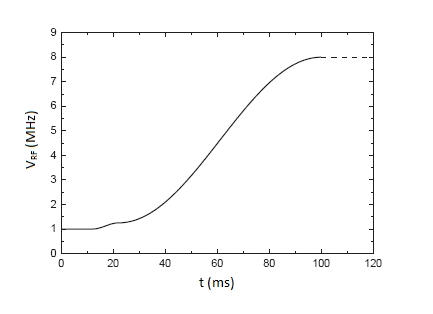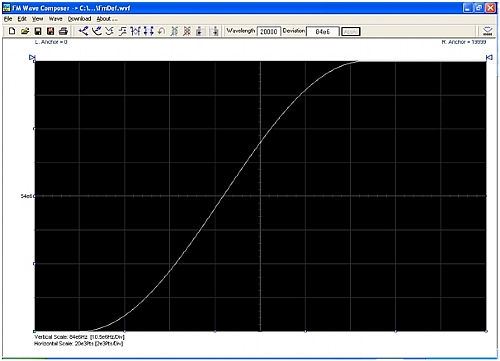Relevant Documents
 (197KB)
(197KB)
Background
Cold atoms are atoms that have been super-cooled to a less than one millionth of a degree above absolute zero (zero degrees Kelvin – the temperature at which atoms cease all movement). Under such supercooled conditions, the result is a new form of matter that is governed by quantum mechanics.
Currently this is a growing field of study at universities and research centers. Some of the potential applications for cold atoms are atom chips and quantum computing.
Requirement
Experiments with cold atoms use radio frequency fields for different purposes, such as trapping the atoms. These “RF-based traps” are of growing interest to atomic physicists. Typically, a single-frequency RF source sweeps over a specified range for a precise period of time (usually for several seconds) in the form of a “ramp” (see Figure 1 below).

Figure 1: RF "Ramp" Used to Trap Supercooled Atoms¹
For RF-based trapping, the quality of the RF source is very important – as frequency or amplitude noise, phase jumps, or discrete frequency steps during the RF ramp can cause crucial experimental errors.
In order to obtain the best results while performing these experiments, the RF source must be able to reproduce this ramp on demand – cleanly, and with the best possible resolution.
Solution
Tabor Electronics’ Wonder Wave family of Arbitrary Waveform Generators (AWGs) provides outstanding support for experimental cold atom research.
- The Wonder Wave serves as a clean sine waveform source for use in creating the RF ramp.
- In addition, Tabor’s highly-flexible FM Wave Composer design tool (see Figure 2 below) allows researchers to arbitrarily design and edit the RF ramp.

Figure 2: Tabor Wave Composer Tool for Arbitrary Wave Design
For More Information
To learn more about Tabor’s solutions or to schedule a demo, please contact your local Tabor representative or email your request to [email protected]
1. Figure 1 is reprinted from O. Morizot et al., "Influence of the Radio-Frequency source properties on RF-based atom traps", Eur. Phys. J. D 47, 209–214 (2008), DOI: 10.1140/epjd/e2008-00050-2